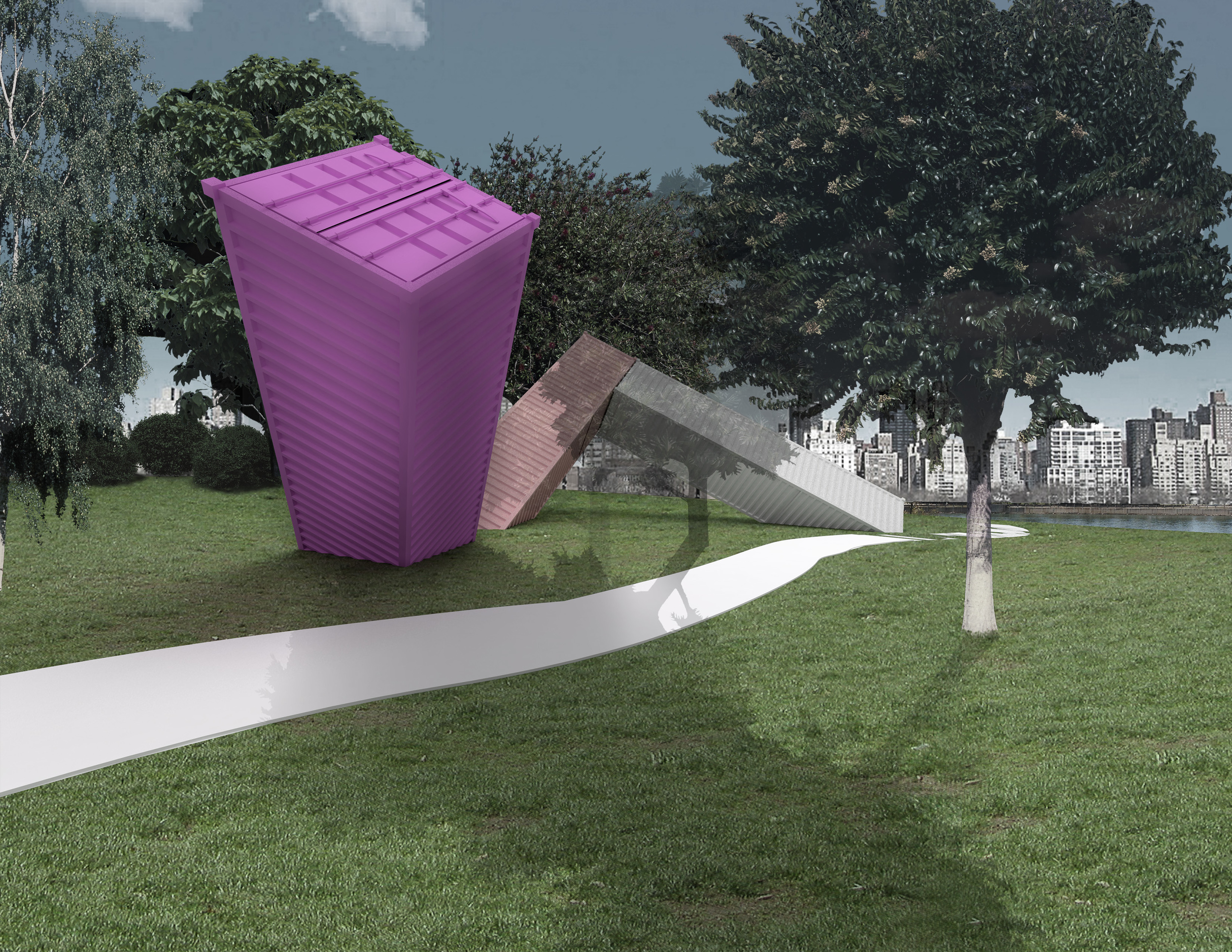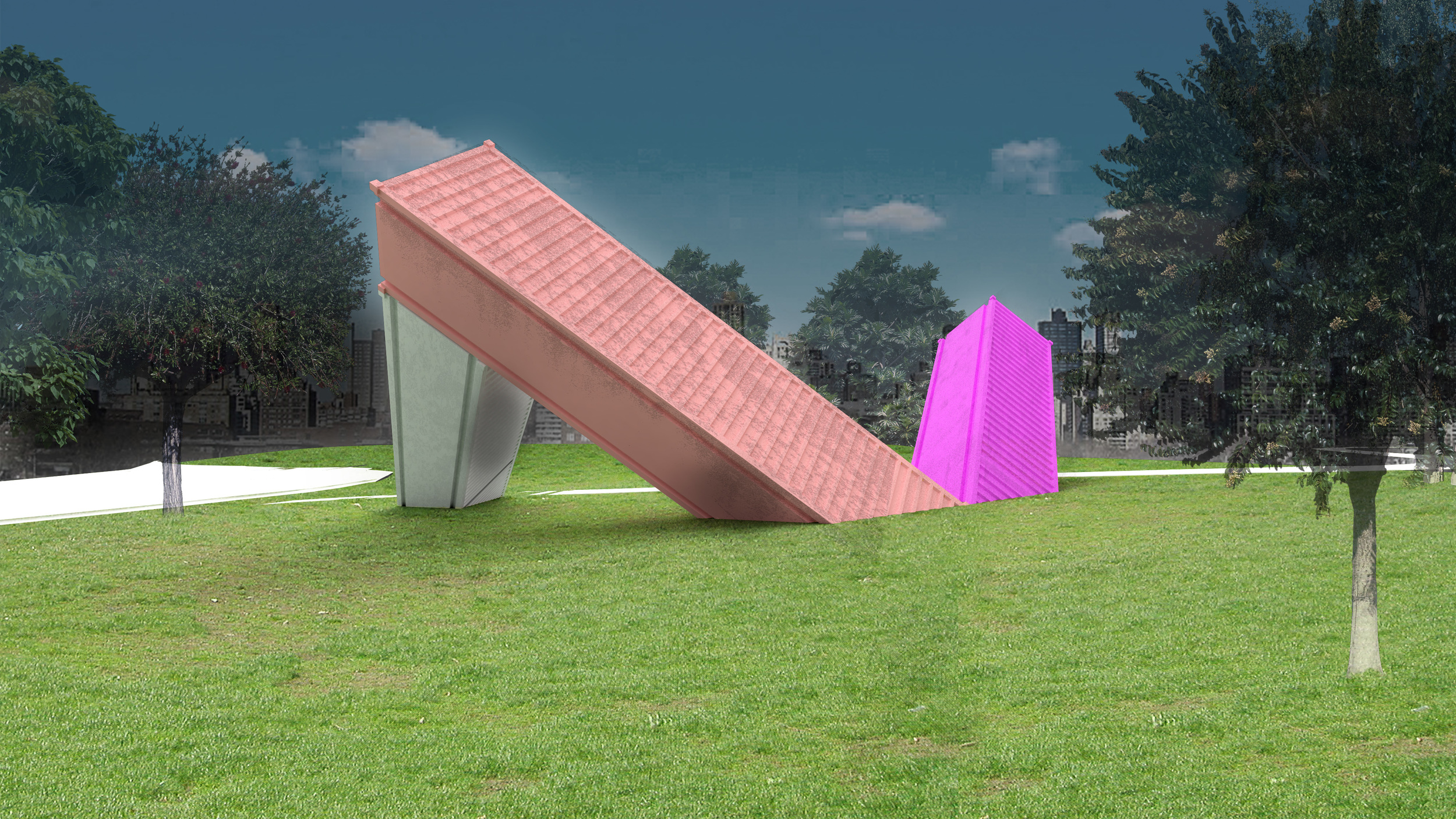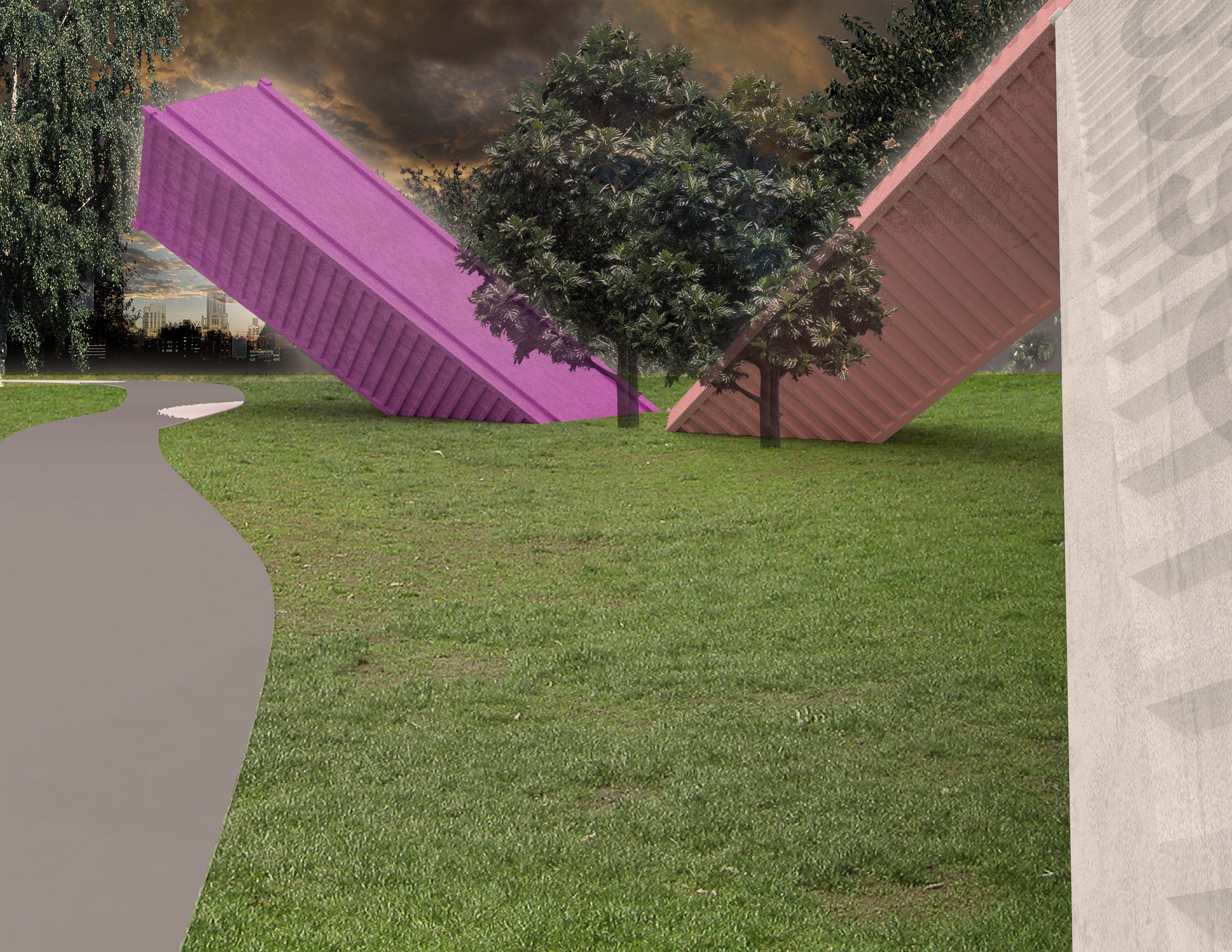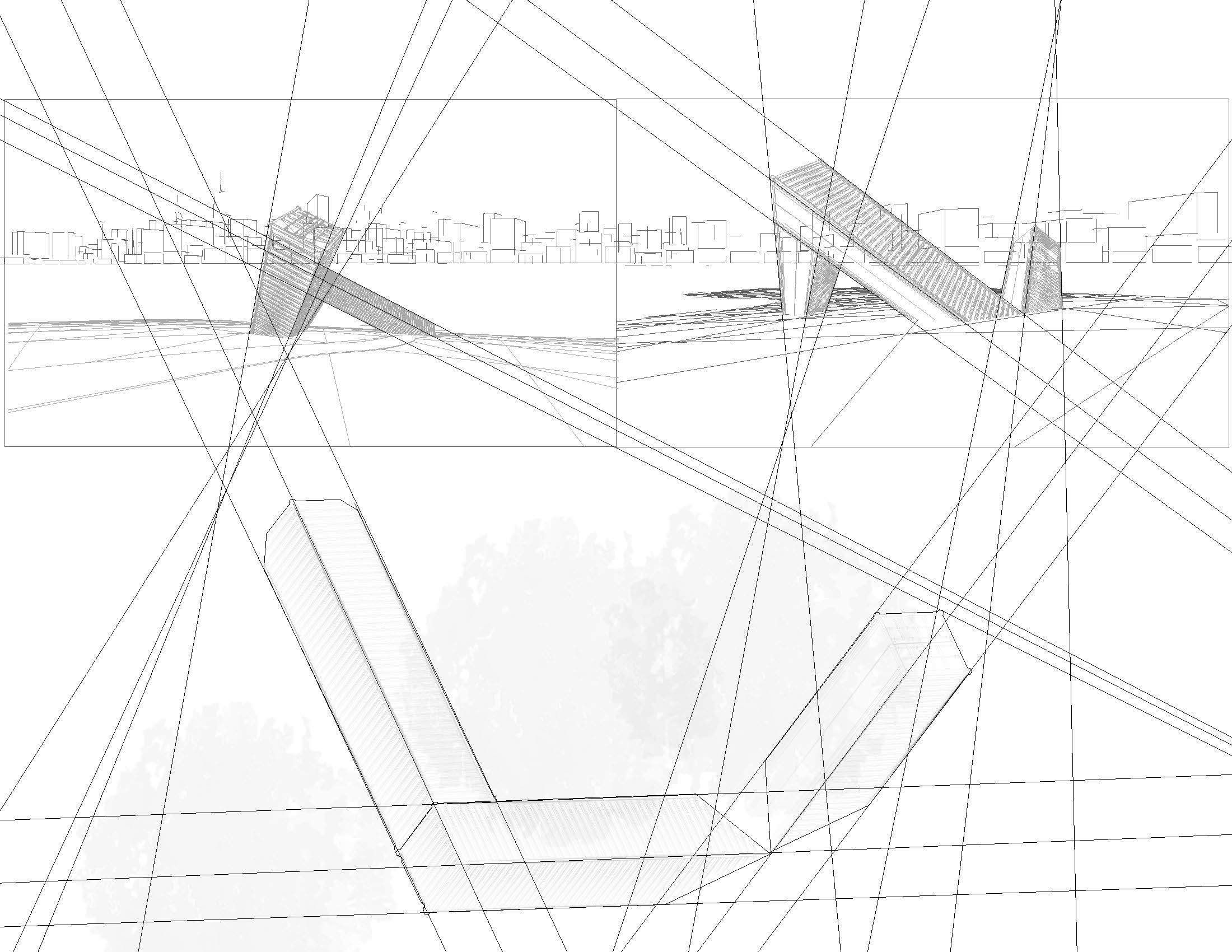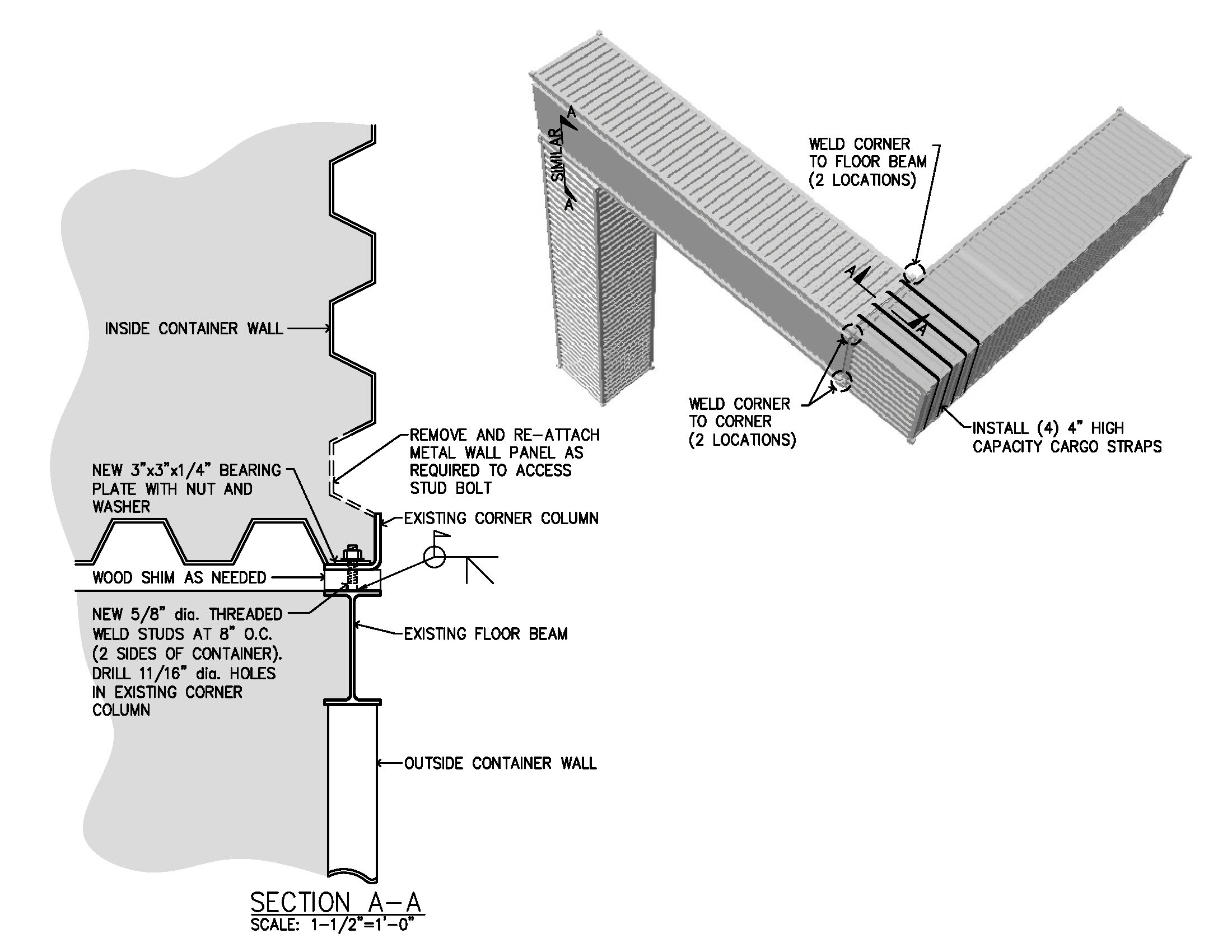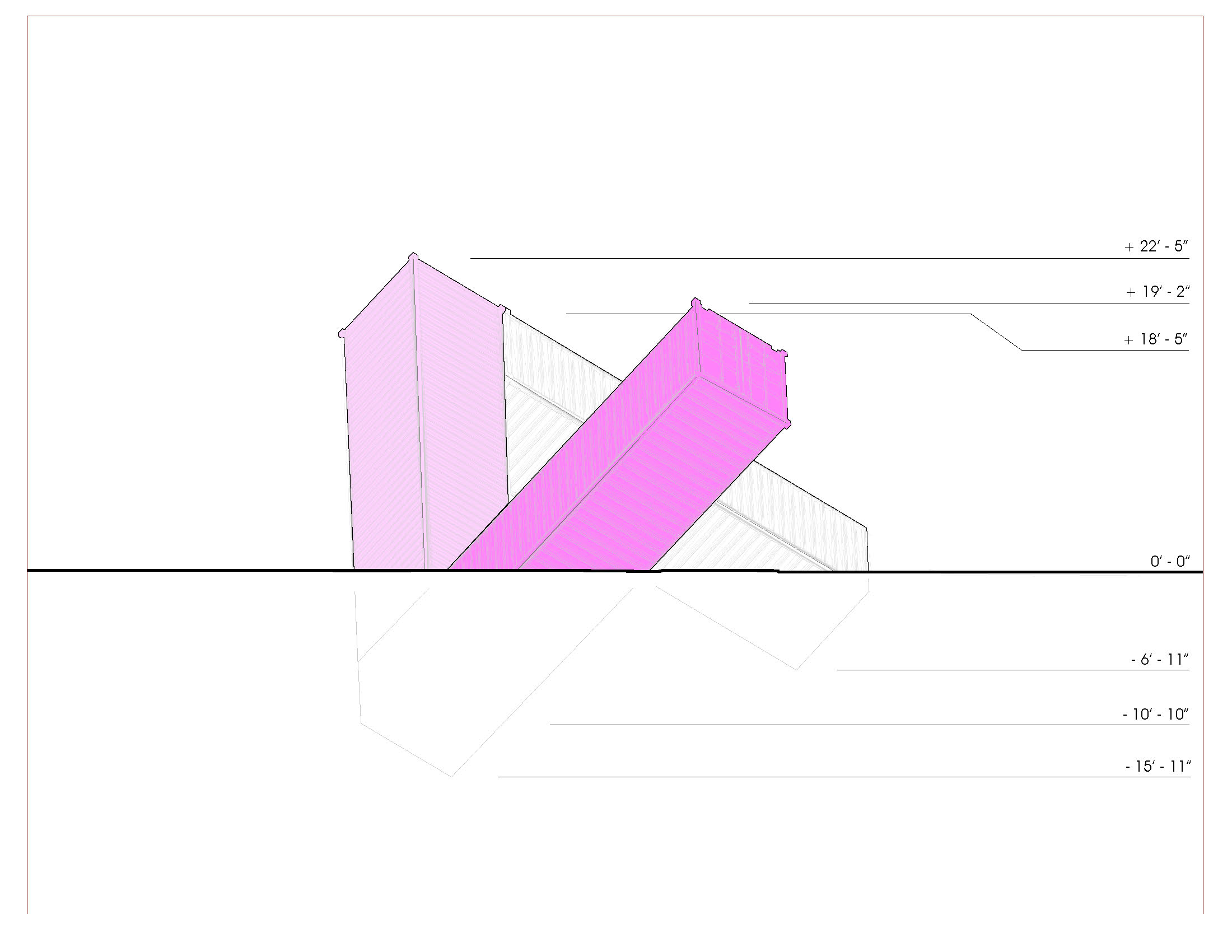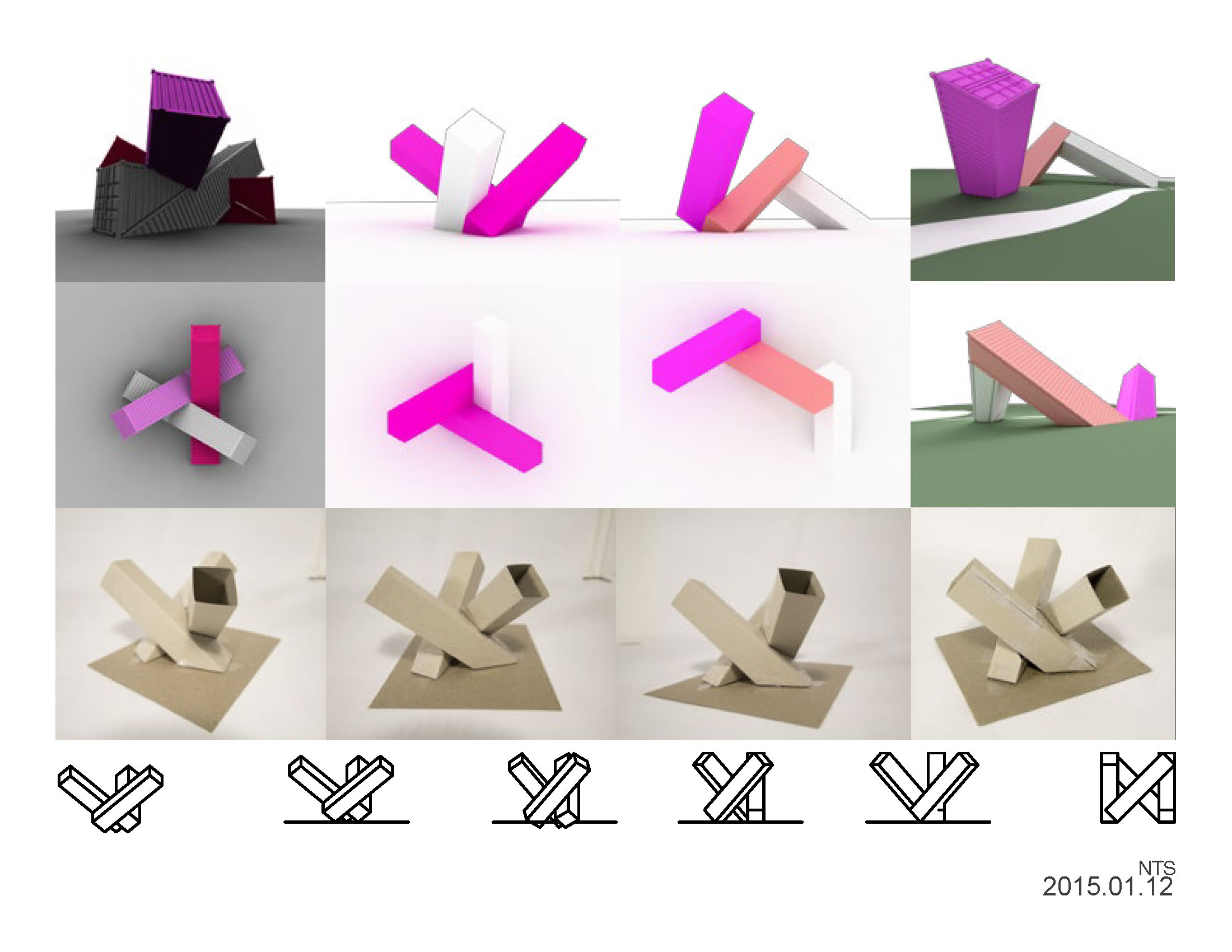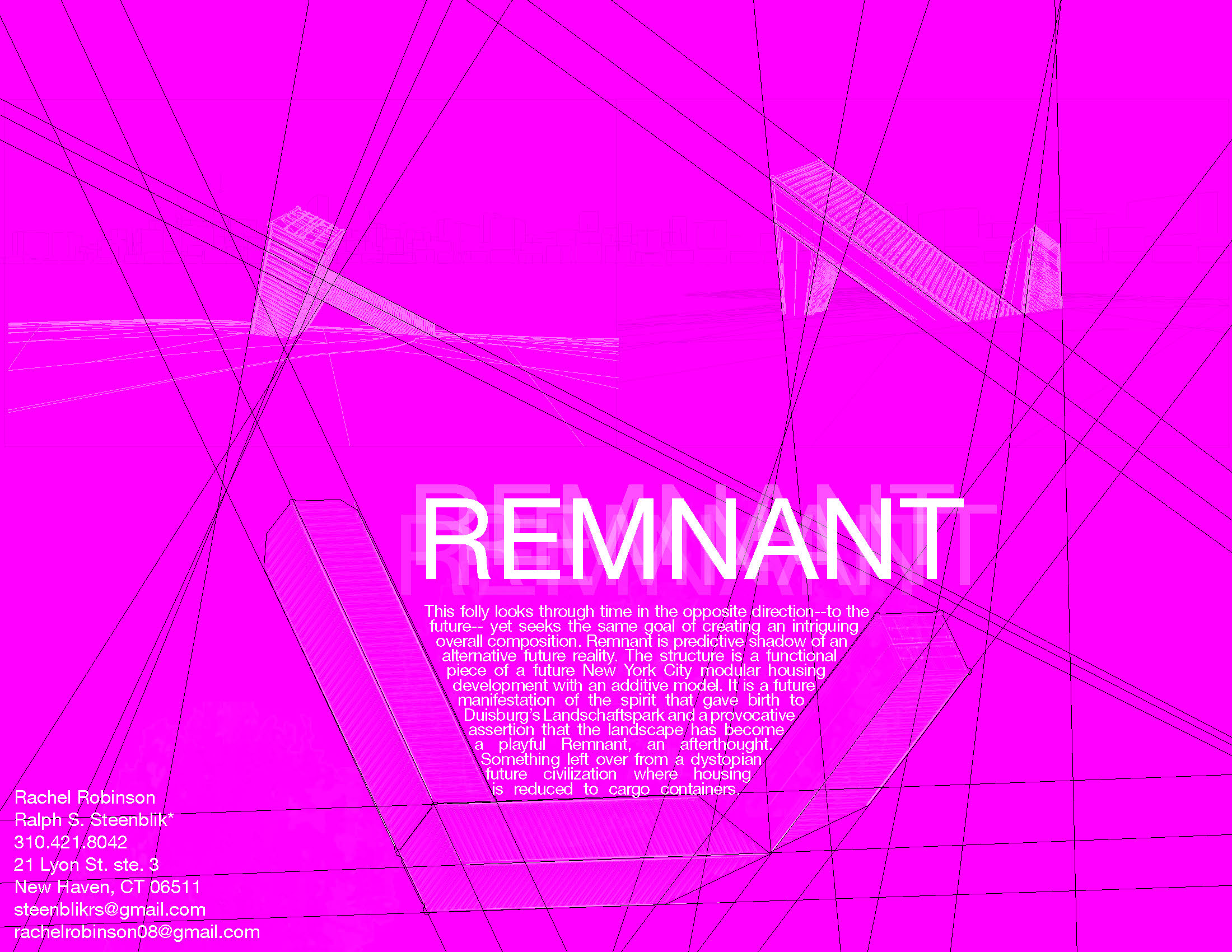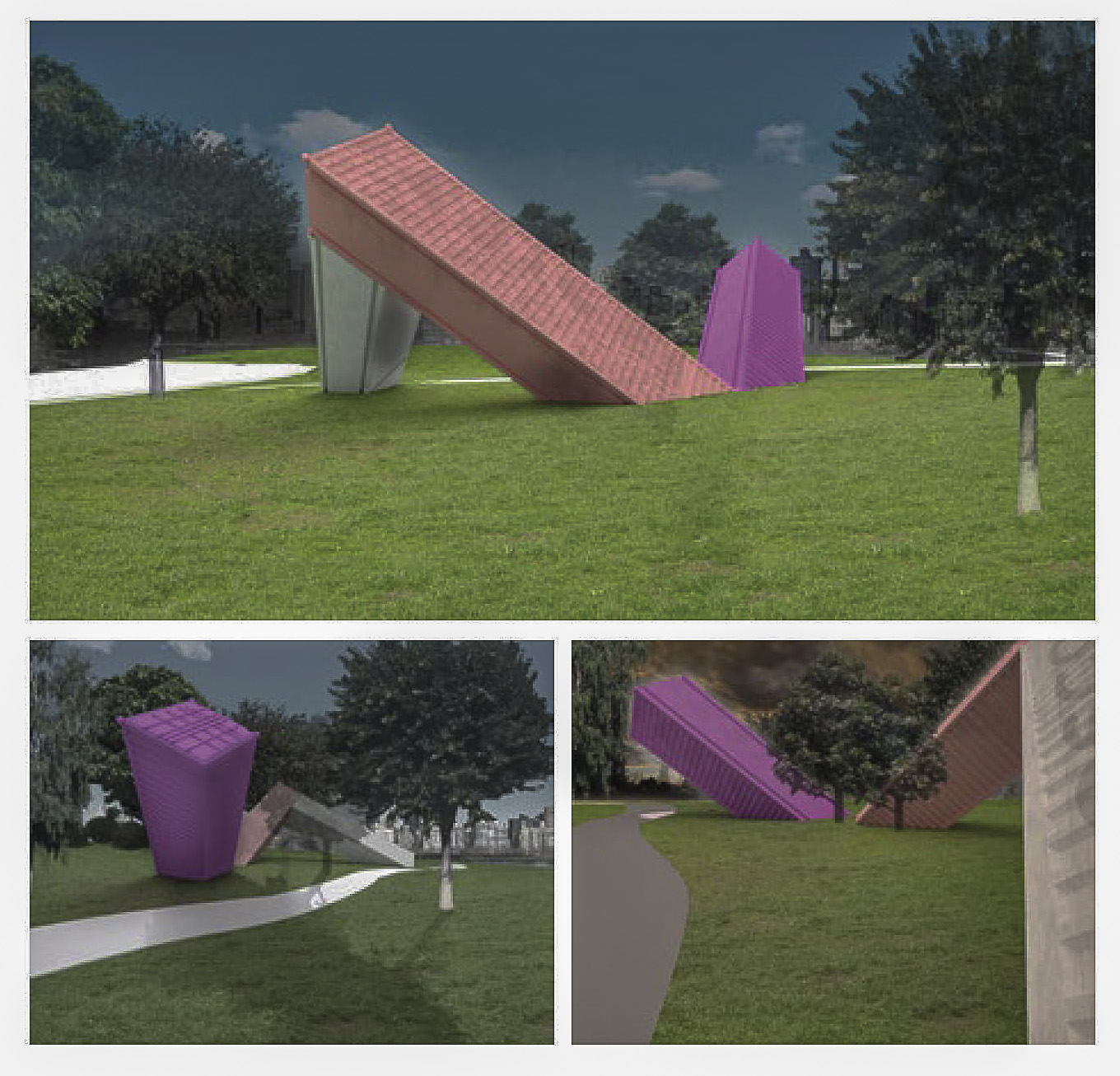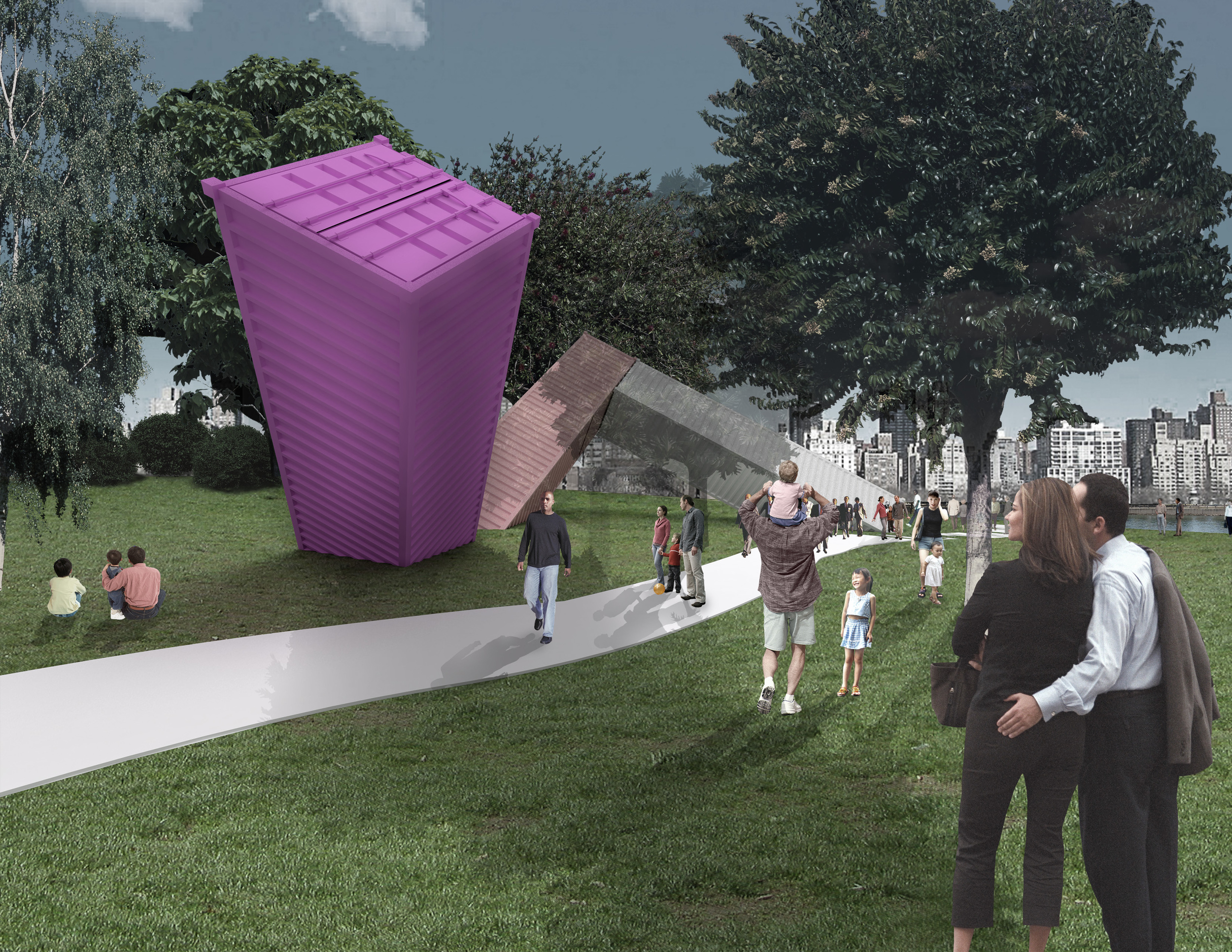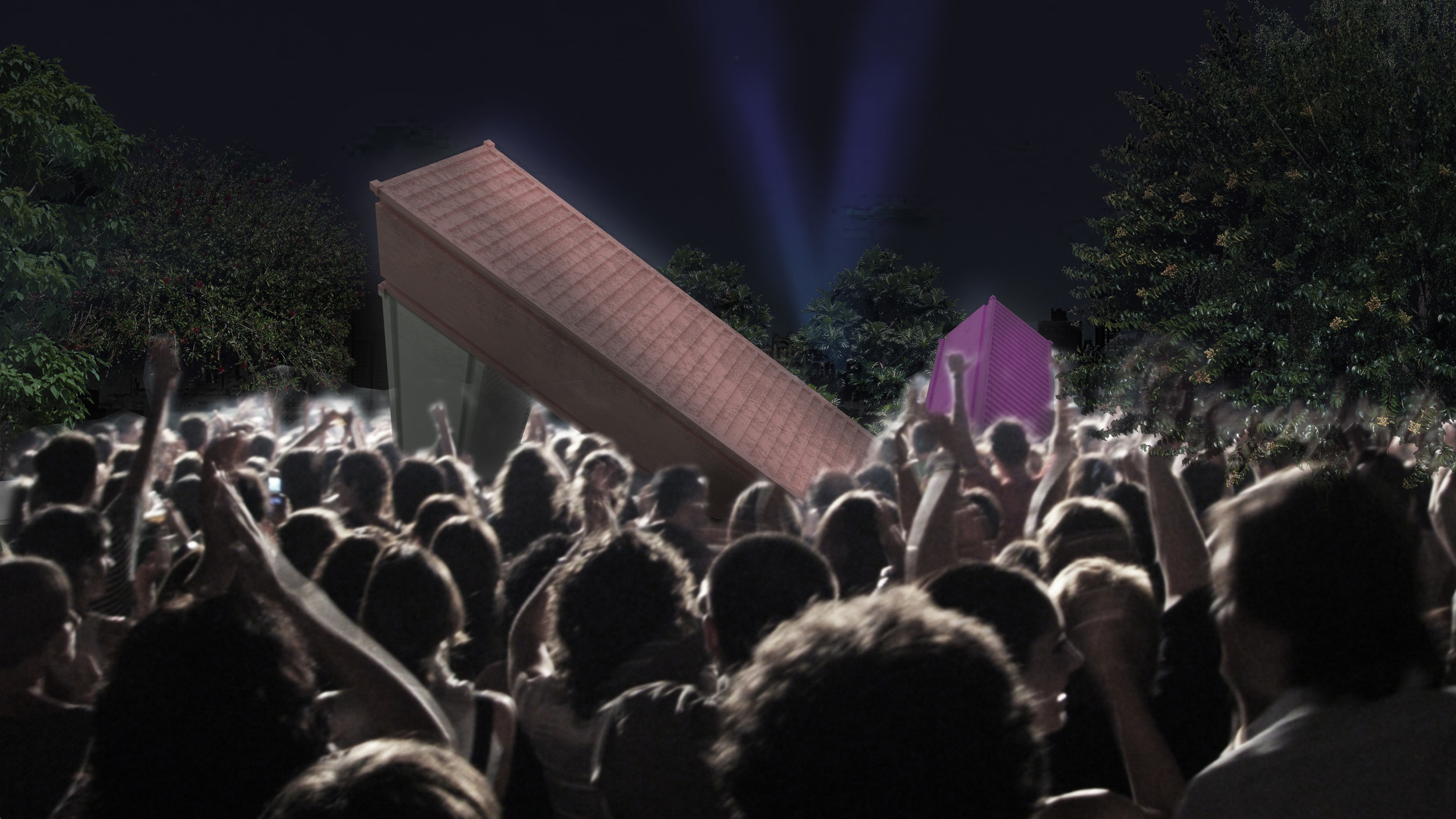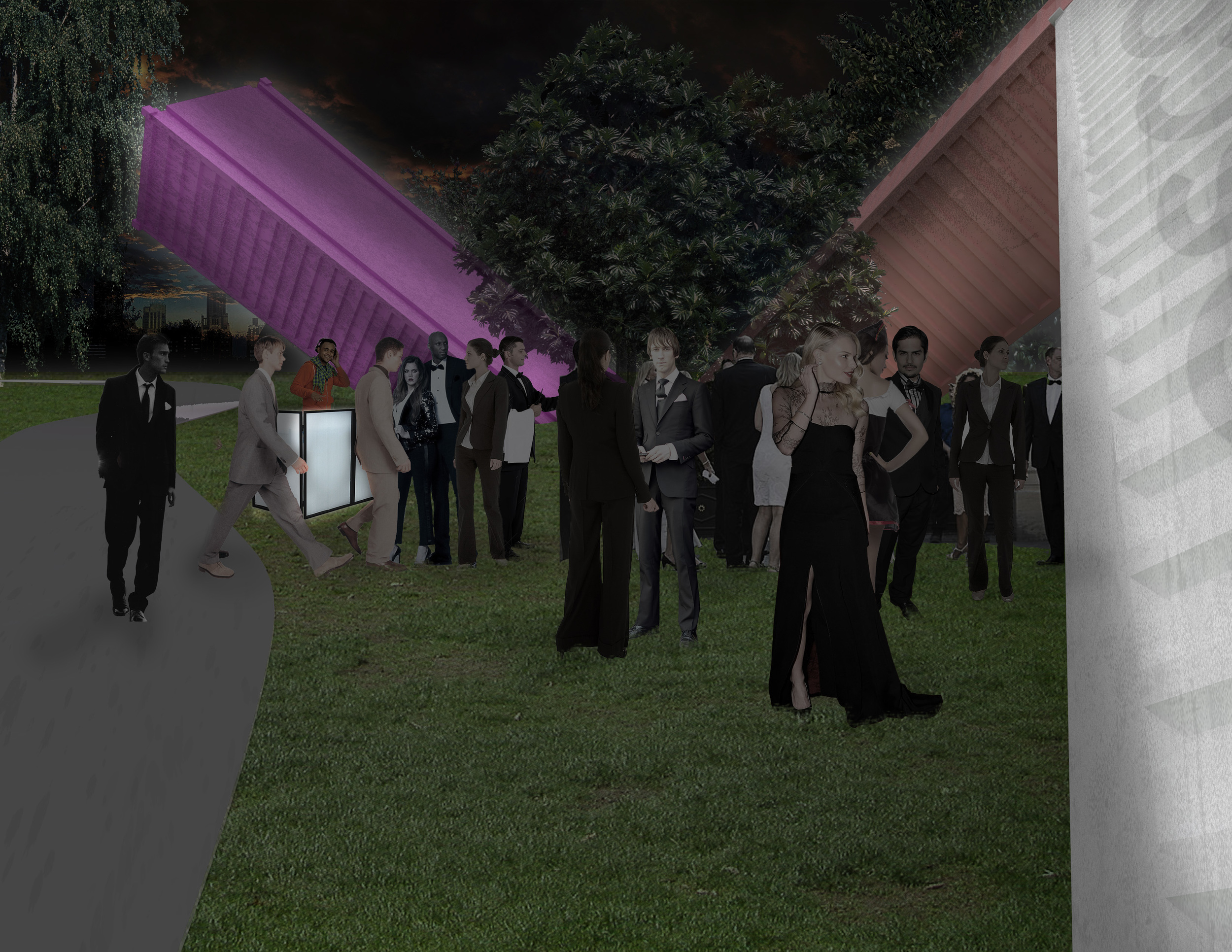Remnant, Folly 雷姆南特,福利
The folly, the haha, the grotto- these are innovations of the English picturesque garden landscapes of the nineteenth century. Each of these innovations served
a purpose-- aesthetics. The goal was to enhance the picturesque landscape with their placement. Such follies attempted to take on some faux historical identity, often
Roman ruins or remains of a civilization long since gone.
This folly looks through time in the opposite direction --to the future-- yet seeks the same goal of creating an intriguing overall composition. Remnant is predictive shadow of an alternative future reality. The structure is a functional piece of a future New York City modular housing development with an additive model. It is a future manifestation of the spirit that gave birth to Duisburg’s Landschaftspark and a provocative assertion that the individual landscape has become a playful Remnant, an afterthought. Something left over from a dystopian future civilization where housing is reduced to cargo containers.
At a distance the warm palette of colors and jumbled cuboids sit like children’s building blocks; blocks that can be rearranged at will. On approach, the scope of the structure comes into perspective. A path leads pedestrians onward, inviting them to explore a structure with greater complexity than was appreciated from a distance. The impression of blocks yields to the vision of an undulating metal river whose course violates even the horizon as it plunges into and out of the ground. The structure’s true size finally reveals itself as the walkway leads directly beside the hovering mass. In this view, Remnant’s dimensionality can be taken in-- the structure not only rises and falls, but twists laterally through a space that demands exploration. In departing the path to explore this interface, pedestrians return finally to the vision of blocks. Only now it is they, not the blocks, that are rearranged.
The sculpture’s constituent parts--large shipping containers-- beckon to New York’s commercial heritage. They form a housing amalgam that, much like the city it arose from, aggregates over time to meet the needs of a growing population. The flow from one container to another is designed to approximate the flow of water gave life to the city and surrounds the site where Remnant will stand.
A final theme of this project is experimentation about non-traditional uses of shipping containers in the built environment. Ralph Steenblik and Rachel Robinson have experimented with modular housing projects as well as various designs involving shipping containers. Ralph is currently working on a shipping container home design for a client. At the close of our exhibition, the containers will be recycled for use in construction of this home.
When the team first set out to design Folly 2015 they already had a starting point from a previous client, but a folly has different constraints than other project needs. Rachel and Ralph went to work in a collaborative creation process to create a structure that produces an impactful experience for those who visit the sculpture garden. Working, structural engineer and architect, is a powerful thing. Both are able to contribute in fundamental ways. The process is a special dialog from which comes a refined piece to be admired.
Project Team: Rachel Robinson, Ralph Steenblik
This project was an entry into Folly 2015 sponsored by Socrates Sculpture Park and The Architectural League
福利,haha,格罗托——这些都是19世纪英国独特花园景观的创新。这些创新都服务于同一个目标——美学。其目的是利用它们的位置来加强生动的景色。这些福利试图呈现一些虚拟的历史身份,通常出现于早已消失的罗马文明废墟或遗迹。
这种福利从相反的方向穿透时间——面向未来,却追求的是同样的目标——创造一个引人入胜的整体构图。雷姆南特是另一种未来会出现的现实的假定倒影。该结构是未来纽约市模块化住宅开发与附加模型的一个功能模块。这是杜伊斯堡的风景公园诞生精神的深层次表现,也是一种挑衅的主张,即个人景观已经成为一个有趣的雷姆南特,一个事后的回忆。这是一个房屋被简化成集装箱的反乌托邦未来文明遗留下来的产物。
这个项目是在苏格拉底雕塑公园和建筑联盟的联合赞助下,于2015年入驻福利。
